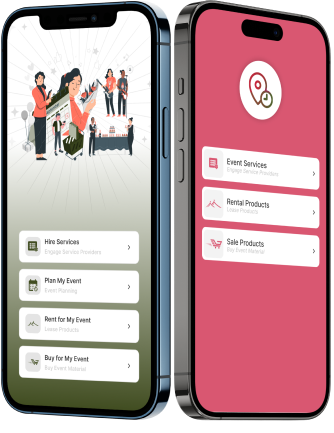Advertisement

Team @ EventNeedz
The Importance of Risk Management in Large Scale Event Planning: A Step by Step Approach

The Importance of Risk Management in Large-Scale Event Planning: A Step-by-Step Approach
Planning a large-scale event is an exhilarating yet complex endeavour. Whether it's a corporate conference, music festival, wedding, or trade show, every event comes with its own set of risks. From logistical challenges to unforeseen emergencies, a well-structured event planning step-by-step guide that incorporates risk management best practices for events ensures smooth execution and guest safety.
Why Risk Management Matters in Event Planning
Risk management isn't just a precaution; it's a necessity. Effective large event safety planning protects attendees, vendors, and organizers from financial and physical harm. Without a solid risk management strategy, even minor incidents can escalate into major crises, leading to legal issues, financial losses, and reputational damage.
Step-by-Step Approach to Risk Management in Large-Scale Event Planning
Step 1: Determine Possible Risks
Finding possible risks for your event is the first obligation of an event organizer. Possible risks may include:
Weather factors: Rain, high heat, or even storms damaging outdoor activities
Crowd management problems: Overcrowding, disorderly conduct, or stampedes
Technical failures: Breakdown of sound system, failure of lighting, or power loss
Medical emergencies: Medical problems, viruses originating from food, or pandemic related issues
Security risks: Theft, vandalism, or incipient terrorist activities
Step 2: Evaluate and Prioritize Risks
After conducting a risk analysis, it is imperative that you estimate the level of probable occurrence and impact.
Evaluate them using a risk matrix:
Low risk: Such incidents are most likely to happen but will have no great impact in the case they materialize (e.g. trivial delays)
Medium risk: Probable incidents that will disrupt the event and thus will need to be managed (e.g. power failures)
High risk: Incidents that will cause severe damage to the event and thus need great attention (e.g. fire, security problem)
Highlighting threat such these would assist pour resources appropriately
Stage 3: Construct a Risk Mitigation Plan
In order to make safe large event planning more comprehensive, formulate an action plan to minimize risk for each event:
Weather contingencies: Have alternate indoor sites, tent shelters, and severe weather notifications
Crowd control methods: Fencing, ticketing, and use of guards
Backup provisions: Spare equipment and available technicians
Medical provisions: Sponsorship with emergency service providers and provision of medical posts
Staffing tasks: Check bags before entry, contracting specialists for guarding, and placing CCTV cameras
Stage 4: Plan for Responses to Emergencies
A plan that is predefined is made available for the event as a strategy to manage risk through a response to an emergency.
Consider:
All personnel are briefed on the emergency steps to take
Evacuation plans are displayed and relayed
First aid facilities are located nearby
Important personnel have pre-established phone numbers for communication
Stage 5: Coverage Insurance and Statutory Registration
Close financial gaps related to your event by contracting the essential coverage:
General liability coverage: This covers damages caused to third parties in the form of accidents and bodily injuries
Postponement insurance: In the event of needing to delay the program execution seeks charge relief
Vendor coverage: Checks if for the vendors safety obey provision
In addition, ensure the local authorities are followed in regard to the granting of permits and their regulations pertaining to the capacity of the crowd and fire.
Step 6: Carry Out Pre-Event Risk Drills
A dry run assists in exposing gaps that one might have missed. Assume emergency situations like:
• A fire exit
• Medical aid
• Security infringement
Fostering these strategies makes certain that the team will be able to effectively handle real-life events.
Step 7: Look Over and Change While the Event is Going on
Managing of risks is a continuous compass. Always, there will be a need to follow up with the event through:
• Provided security and already on the ground CCTV
• Social media subtweets for feedback
• Incident reporting for fast actions
Fostering flexibility makes it possible to deal with problems when they choose to spring up.
Step 8: Create and Submit for Evaluation After the Event
After the event, there is a need to analyse how effective your management of risks was:
• Take notes of the events and how they were dealt with
• Do a round and get opinions from staff, vendors and attendees
• Note everything to become better next time
Conclusion
Success on planning for surveillance during large events comes from anticipation of risk and effective management of a possible crises. Following this detailed guideline, any event organizer ensures ease from planning to execution while accounting for the safety of users, properties, and reputation of the brand. Putting a fundamental practices of risk management on events is not safety measures, it helps smooth organization of an event.
About
A blog is an online Article or informational website displaying information in reverse chronological order, with the latest posts appearing first, at the top. It is a platform where a writer or a group of writers share their views on an individual subject.

Advertisement










